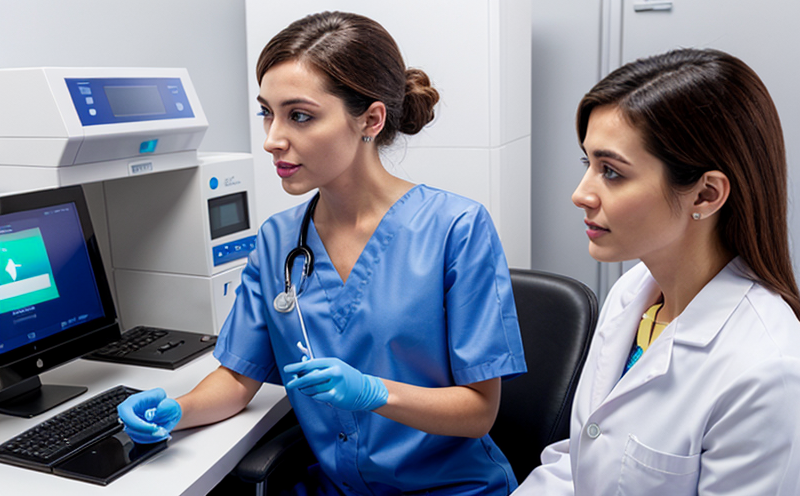DNA-Based Testing of GMO Cotton Contamination
The demand for genetically modified organisms (GMOs) in agriculture has grown significantly over recent years. Among these crops, cotton is one of the most widely used and commercially important commodities globally. DNA-based testing plays a crucial role in ensuring compliance with regulations and maintaining the integrity of the supply chain by detecting GMO contamination in cotton samples.
DNA-based testing allows for precise identification and quantification of specific genetic modifications introduced into plants through biotechnology. This method involves isolating DNA from plant tissues, amplifying target sequences using Polymerase Chain Reaction (PCR), followed by analysis via gel electrophoresis or capillary electrophoresis to detect the presence of GM markers.
In the context of cotton testing, DNA-based methods ensure accurate detection of unauthorized transgenes that could compromise organic status, affect trade relationships, and impact consumer trust. Compliance with international standards such as ISO/IEC 17025 guarantees reliable results, while adhering to stringent quality controls ensures precision.
Our service offers comprehensive genetic profiling, focusing on widely used GM cotton events including Bt (Bacillus thuringiensis) varieties designed for insect resistance. By employing advanced techniques like next-generation sequencing (NGS), we provide detailed insights into the genetic makeup of tested samples.
The process begins with sample collection and preparation, ensuring minimal DNA degradation or contamination. Next comes PCR amplification targeting specific regions within the genome associated with GM traits. Finally, results are interpreted based on electrophoretic patterns or sequence reads to confirm presence or absence of target sequences.
Our team uses state-of-the-art equipment such as ABI 3500 Genetic Analyzer and QIAseq BioAnalyzer for high-throughput data generation and analysis. Reporting is conducted in accordance with standard operating procedures (SOPs), providing clients with detailed reports outlining test parameters, specimen preparation steps, instrument specifications, and final interpretations.
Through rigorous quality assurance measures and adherence to international standards like ISO/IEC 17025, our service ensures accurate identification of GMO contamination in cotton samples. This level of precision is essential for maintaining compliance with regulatory requirements and building trust within the industry.
| Sample Type | Target Genes Detected | Testing Methodology |
|---|---|---|
| Cotton Fiber Samples | Bt Cry1Ac, Bt Cry2Ab | PCR Amplification followed by Capillary Electrophoresis |
| Liquid Extracts from Seeds | Bt Cry3Aa, CP4 EPSPS | Next Generation Sequencing (NGS) |
Testing Process Overview:
- Sample Collection & Preparation
- DNA Isolation from Plant Tissues
- PCR Amplification of Target Regions
- Electrophoretic Analysis or Sequencing
- Data Interpretation and Reporting
Test Parameters:
- Type of Cotton Samples: Fiber, Seed Extracts
- Detection Limits: 0.5% for fiber samples; 1 ppm for seed extracts
- Target Genes: Bt Cry1Ac, Cry2Ab, Cry3Aa, CP4 EPSPS
- Testing Methodology: PCR, Capillary Electrophoresis, Next Generation Sequencing (NGS)
- Reporting Format: Detailed Interpretation Report including electrophoretic patterns or sequence reads.
Industry Applications
DNA-based testing of GMO cotton contamination is vital for several sectors:
- Agriculture: Ensuring compliance with GM labeling laws and protecting organic crops from unintended mixing.
- Textile Industry: Maintaining brand integrity by avoiding consumer backlash associated with non-authorized GM content in textiles.
- Export Markets: Meeting stringent import requirements set by various countries to prevent contamination leading to trade disruptions.
| Cotton Sample Type | Target Genes Detected |
|---|---|
| Fiber Samples | Bt Cry1Ac, Bt Cry2Ab |
| Liquid Extracts from Seeds | Bt Cry3Aa, CP4 EPSPS |
Key Applications:
- Quality Assurance: Ensuring product purity and consistency.
- Compliance Monitoring: Adhering to national and international regulations regarding GM content.
- Supply Chain Integrity: Protecting brands from unintended contamination issues that could lead to market losses.
Eurolab Advantages
Our laboratory offers several advantages when it comes to DNA-based testing of GMO cotton contamination:
- ISO/IEC 17025 Accreditation: Ensuring the highest level of quality and reliability in our testing procedures.
- State-of-the-Art Equipment: Utilizing advanced instruments like the ABI 3500 Genetic Analyzer for precise results.
- Rigorous Quality Controls: Maintaining stringent standards throughout every stage of the testing process.
- Comprehensive Reporting: Providing detailed reports that include electrophoretic patterns or sequence reads to facilitate easy interpretation.
We pride ourselves on delivering accurate, reliable, and timely results, which are critical for maintaining compliance with regulatory requirements and ensuring product integrity within the industry.
Competitive Advantage and Market Impact
DNA-based testing of GMO cotton contamination provides significant competitive advantages:
- Precise Identification: Accurate detection of unauthorized GM content ensures market compliance and brand integrity.
- Enhanced Reputation: Maintaining strict standards builds trust among consumers, suppliers, and regulatory bodies alike.
- Market Differentiation: Offering reliable testing services distinguishes our laboratory from competitors in the field.
Market Impact:
- Facilitates Compliance with Regulatory Requirements: Ensuring adherence to national and international standards.
- Supports Organic Certification Programs: Preventing contamination of organic crops, thus protecting consumer health and safety.
- Aids in Trade Relations: Avoiding disputes over GM content helps maintain strong relationships with import/export partners.
Our service plays a pivotal role in safeguarding the integrity of cotton products across various sectors. By providing accurate and reliable testing results, we contribute to fostering trust within the industry and promoting sustainable practices.





